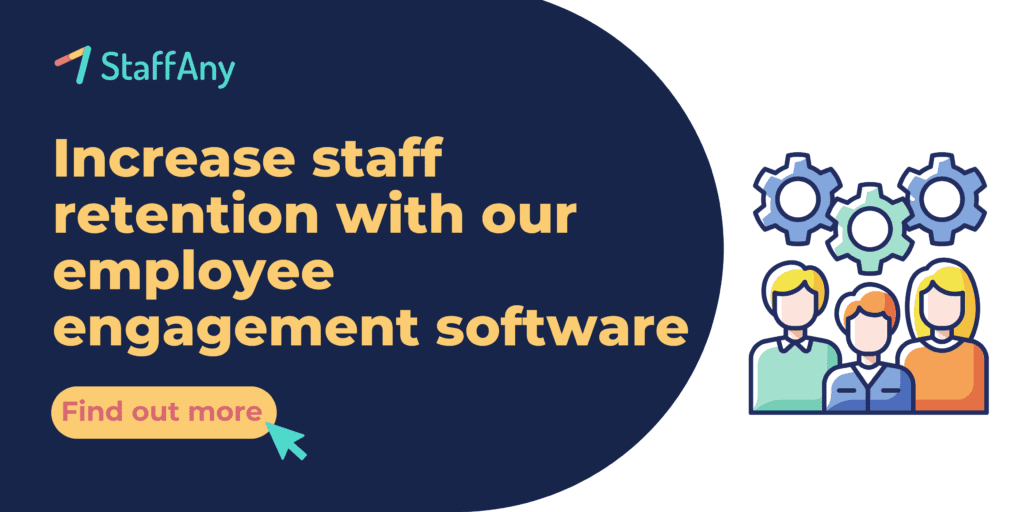There is a widely believed theory that 20 percent of your employees will love you, 20 percent will absolutely hate you and the other 60 percent will fall between the two extremes. In the human resource management world, employees who are dissatisfied with their managers or coworkers are referred to as dissatisfied employees.
Dissatisfied employees exist because they feel that someone isn’t treating them fairly or isn’t listening to their problems. Whether it is perceived or actually the case, when employees are unhappy, they often don’t do their jobs well, and this can make other employees feel bad about their own work.
Indication of Employee Dissatisfaction in the F&B Workplace
There are many reasons why employees might be dissatisfied. It could be because of how their bosses or colleagues act, they’re frustrated with their job, or they have personal problems affecting their work.
Here are few examples of situations that indicate employee dissatisfaction in the F&B workplace:
- A new, talented employee, who initially showed great promise, starts taking longer to get into action and begins missing work shifts soon after joining the team.
- A new employee, who initially starts shifts with enthusiasm, then becomes irritated and disrespectful to their coworkers and managers.
- A person who has been working at a restaurant for ten years keeps giving work that’s not very good for a few months in a row.
- An employee who used to be very active and vocal, starts avoiding interactions with managers and coworkers and becomes passive.
Leadership Behavior Contributes to Employee Satisfaction
Many companies experience employee dissatisfaction but rarely diagnose and treat it as a leadership issue. Instead, they consider it a normal part of organizational life, or mistakenly attribute it to other causes. Whatever the case may be, employee dissatisfaction has the potential to bring about higher turnover rates in the workplace.
To avoid falling into an acute leadership problem, identify common leadership traits that cause dissatisfaction within the organization and trigger adverse employee turnover:
Unnecessary Micromanagement
Some leaders believe that they’re the only ones who can do things right. They either try to control every little detail of the business or watch employees very closely and punish them for mistakes if things are not done their way, even if the staff has a better way of doing things. This makes the team feel frustrated and like they can’t achieve anything on their own.
Lack of Communication
Managers often share new plans without explaining how they came up with them. Sometimes they implement these without even sharing the plans. This confuses employees and creates a secretive atmosphere in the workplace.
Not Taking Responsibility
Sometimes, bad leaders blame others when things go wrong, even though they’re the ones in charge. They care too much about themselves and what others think of them. This makes it hard for managers and employees to speak up or share new ideas because they’re afraid of backlash.
Spread Rumors
When managers gossip, it sets a bad example and ruins a transparent and teamwork-oriented culture. Gossip slowly damages the workplace’s vibe. People start forming groups and bond over talking about others, instead of celebrating achievements and shared goals.
Dealing With an Unhappy Employee in F&b Workplace
If you take the time to listen to and fix the problems of unhappy employees, you can make them feel better about the business and create a positive work environment. Let’s start by learning some simple steps to deal with an unhappy employee.
Have a Conversation With the Unhappy Staff Immediately
Don’t wait if you notice an employee isn’t happy. Take a moment to find out what’s going on. When you talk about how they’re doing, it helps to have clear facts. This way, you can avoid guessing or making things up about their behavior. After explaining why you’re meeting, let them share what they think. When it’s about personal stuff, have a private chat. This can make them feel more comfortable, and it’s easier to talk openly and solve things.
Act in a Proper and Respectful Way
You have noticed that there are employees who are not happy with the way you or your coworkers work. No matter how they act, it’s important to stay professional and stay calm at work. Listen carefully to what they say and ask if you’re not sure. Write down things that you or your team can fix right away and things that might take more time to solve.
Work Together to Find Answers
After talking about what’s bothering both sides, you can start figuring out how to fix things. Sometimes, there’s only one way to solve a problem, and other times, there are many ways. For instance, if an unhappy employee has a small issue with a coworker, you could suggest getting everyone together for a meeting. Or, you could write down the complaint and keep an eye on what happens. The important thing is to help the employee while making sure everyone is responsible for what they do.
Keep the Conversations Going
Once you’ve figured out how to help the employee do better at their job, it’s important to keep an eye on how things are going. This shows the employee that you’re serious about helping. You should also talk to the employee regularly in case you need to find different ways to solve any problems. Check in with staff to see if things are on track, and help to facilitate if things are not on track.
Make Sure to Talk to and Listen to Each Other Openly
Encourage open communication. It helps signal to an unhappy worker that you think their ideas are important and you value their work. Ask them to talk to you more about what’s bothering them at work so we can make our team better. We can also try new ways to help everyone talk and work together better, like fixing any problems that make it hard to communicate with each other.
Collect Feedback Regularly
Collecting staff feedback, and then acting on it, shows you value their opinions. These days, technology can help you gather feedback if doing it by hand is challenging. No matter what medium is used to collect opinions, this should be done regularly so that you can use their feedback to identify potential problems at any level in the workplace, which can help guide you in future decision-making to minimize employee dissatisfaction.
Automate Feedback Collection for More Effective Work
Sometimes employees don’t know how to act or convey something to their manager because they don’t know the right medium of communication. It is also human nature for employees to hide their true opinions during a direct conversation with their manager. They may exaggerate their positive feelings or downplay negative feelings. Hence, there is a greater chance of misinterpretation when collecting feedback manually.
Not to mention, the environment that surrounds them such as the dynamic and high-paced F&B work environment makes it difficult for employees to voice their opinions. From the perspective of managers and business owners, collecting feedback is also often a challenge as it requires a lot of time and resources to get honest feedback from each employee.
If these things prevent you from collecting feedback at the workplace, then you can use employee feedback automation for more effective work. Employee feedback automation is a process used to automate the collection of feedback from employees so that you can act on it.
It means using technology to automatically get feedback from your coworkers, so you can make things better. This is really useful for your team if you want to take a staff-centered approach to make your staff happier at work.
StaffAny has an automated feedback collection feature in their latest product called EngageAny, an automated performance-based rewards & employee engagement program. With this automation, managers and business owners can focus more on their products or services rather than allocating too much effort on manual feedback collection activity.
Examples of automated feedback collection on EngageAny:
By using EngageAny, employees can give general feedback on how they feel at work easily through apps on their devices. They can include any comments to further explain how they feel about their shift each day. Managers can also create anonymous feedback forms on EngageAny to allow staff to give regular feedback anonymously so that employees don’t feel awkward expressing how they feel at work.
From there, managers can regularly dive into the feedback from their staff and analyze to gain many actionable insights to close the feedback loop and improve employee satisfaction in a timely manner. When employees see that their issues are resolved in no time or get regular updates from you, they understand that you care about their issues.
Are You Ready With New Ways to Handle Situations When Your Employees Dislike You and Make a Better Workplace for Them?
Prepare yourself to unlock the potential of EngageAny, a unique offering exclusively brought to you by StaffAny! Are you ready to seamlessly integrate the power of EngageAny into your business? Don’t hesitate any further!
Learn more about EngageAny here.












